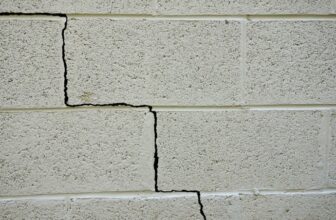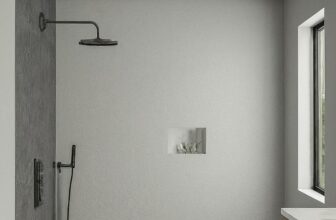
Having clean and healthy air in your home is essential for the well-being of you and your family. Mold is a common issue that can affect indoor air quality and lead to various health problems. In this comprehensive guide, we will explore how to keep the air in your home free of spores by effectively cleaning mold. From identifying and removing mold to preventing its growth, we will provide you with expert tips and techniques to maintain a spore-free environment. So, let’s dive in and learn how to ensure clean and fresh air in your home.
How to Keep the Air in Your Home Free of Spores Cleaning Mold
Mold growth in your home can have a significant impact on the quality of indoor air. Mold spores can trigger allergies, respiratory issues, and even exacerbate existing health conditions. To keep the air in your home free of spores, it’s crucial to address mold problems promptly and effectively. Here are some steps you can take to achieve a spore-free environment:
-
Identifying the Presence of Mold in Your Home
Mold often thrives in damp and humid areas, such as bathrooms, kitchens, and basements. To determine if mold is present in your home, look out for the following signs:
- Musty odor: Mold has a distinctive earthy smell. If you notice a persistent musty odor in certain areas of your home, it could indicate mold growth.
- Visual cues: Mold can appear as discolored patches on walls, ceilings, or other surfaces. Keep an eye out for green, black, brown, or white spots or fuzzy growth.
- Allergic reactions: If you or your family members experience allergic symptoms like sneezing, coughing, or itchy eyes when spending time in a particular room or area, it could be due to mold presence.
If you suspect mold in your home, it’s important to verify its presence before proceeding with cleaning and remediation efforts.
-
Understanding the Impact of Mold on Indoor Air Quality
Mold not only affects the appearance of your home but also poses risks to indoor air quality. The spores released by mold can become airborne and circulate throughout your living space, potentially leading to health issues. Exposure to mold spores can cause respiratory problems, allergies, and even trigger asthma attacks. By keeping the air in your home free of spores, you can create a healthier environment for everyone.
-
Essential Equipment and Supplies for Mold Cleaning
Before you start the mold cleaning process, it’s important to gather the necessary equipment and supplies. Here are some essential items you’ll need:
- Protective gear: To safeguard yourself during mold cleaning, wear gloves, goggles, and a respirator mask. These will protect you from inhaling mold spores and coming into direct contact with the cleaning agents.
- Cleaning solutions: Depending on the surface and severity of mold, you may need different cleaning solutions. Common options include bleach, hydrogen peroxide, vinegar, or commercial mold cleaners. Always read the labels and follow the instructions for proper use.
- Brushes and scrubbers: Stiff-bristle brushes, scrub brushes, or abrasive pads are useful for scrubbing away mold from surfaces.
- Plastic sheets and tape: When dealing with extensive mold growth, it’s important to isolate the affected area. Use plastic sheets and tape to seal off the space and prevent spores from spreading to other parts of your home.
-
How to Safely Clean Mold from Different Surfaces
Cleaning mold effectively requires specific techniques for different surfaces. Here’s how you can tackle mold on common surfaces:
- Walls and Ceilings: Start by protecting the surrounding areas with plastic sheets. Scrub the mold-infested areas using a mixture of bleach and water, or an appropriate mold cleaner. Rinse the surface with clean water and allow it to dry thoroughly.
- Bathroom Fixtures: Use a mold cleaner or a mixture of vinegar and water to remove mold from bathroom tiles, shower curtains, and other fixtures. Scrub gently and rinse well to eliminate any residue.
- Carpet and Upholstery: If mold has affected your carpets or upholstery, it’s best to seek professional help for thorough cleaning and drying. Mold-infested materials may need to be replaced to prevent recurrence.
Remember to take precautions while cleaning mold, and if you’re dealing with extensive growth or are unsure about the best approach, consult a professional mold remediation service.
-
Prevention Techniques to Keep Mold at Bay
Cleaning mold is just one part of the equation. To maintain a spore-free environment in your home, it’s crucial to implement preventive measures. Here are some tips to prevent mold growth:
- Manage humidity: Keep indoor humidity levels below 50% to discourage mold growth. Use dehumidifiers in damp areas and ensure proper ventilation throughout your home.
- Address leaks and water damage: Promptly repair any leaks, plumbing issues, or water damage. Mold thrives in moist environments, so it’s important to address these problems immediately.
- Improve airflow: Proper air circulation helps prevent mold. Use fans, open windows, and install ventilation systems to improve airflow and reduce humidity.
- Regular cleaning: Regularly clean and vacuum your home to minimize dust and mold spores. Pay special attention to areas prone to moisture, such as bathrooms and basements.
- Monitor indoor plants: Overwatered indoor plants can contribute to mold growth. Avoid excessive watering and ensure proper drainage to prevent mold issues.
Implementing these preventive techniques can significantly reduce the likelihood of mold growth and help keep the air in your home free of spores.
Frequently Asked Questions (FAQs)
Can mold be completely eliminated from a home?
Mold can be effectively removed and controlled, but it’s challenging to eliminate it completely. The key is to address the underlying causes of mold growth and maintain a clean and dry environment to prevent its return.
What are some natural alternatives to chemical mold cleaners?
If you prefer natural alternatives, you can use vinegar, hydrogen peroxide, or tea tree oil mixed with water to clean mold. These options are eco-friendly and can be effective for mild mold problems.
Is it safe to clean mold myself, or should I hire a professional?
Small areas of mold can often be cleaned by homeowners, following proper safety precautions. However, if you’re dealing with extensive mold growth, mold in hard-to-reach areas, or if you have health concerns, it’s advisable to consult a professional mold remediation service.
Can mold grow in areas other than visible surfaces?
Yes, mold can grow in hidden areas such as behind walls, under carpets, and inside air ducts. If you suspect mold but cannot see it, consider contacting a professional mold inspector to assess your home.
How long does it take for mold to grow after a water leak or flooding?
Mold can start growing within 24 to 48 hours after a water leak or flooding event. It’s crucial to address water damage promptly and initiate drying and cleaning procedures to prevent mold growth.
Are there any health risks associated with exposure to mold?
Mold exposure can lead to various health issues, particularly for individuals with allergies, respiratory conditions, or weakened immune systems. Symptoms may include nasal congestion, coughing, wheezing, skin irritation, and eye or throat irritation.
Conclusion
Maintaining clean and spore-free air in your home is essential for the health and well-being of your family. By understanding the impact of mold on indoor air quality, identifying and safely cleaning mold, and implementing preventive measures, you can create a healthier living environment. Remember to address mold issues promptly, follow proper safety precautions, and consult professionals when necessary. With these expert tips and techniques, you can enjoy fresh and clean air in your home, free from spores and mold.




